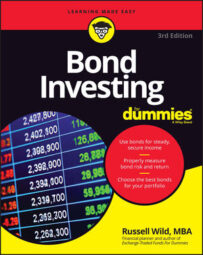When it comes to adding stability to a portfolio — the number one reason that bonds belong in your portfolio — Treasuries and investment-grade (high quality) corporate bonds are your two best choices. They may have saved your grandparents from destitution during the Great Depression. They may have spared your 401(k) when most stocks hit the skids in 2000–2002 or when your savings again took a nosedive in 2008.
There are, of course, other kinds of bonds. Municipals are often appropriate for people in higher income brackets, but they are generally not a good choice for tax-advantaged accounts such as IRAs and 401(k) plans, where the vast majority of Americans have most of their savings.
Agency bonds can sometimes substitute for Treasuries, but their inordinate complexities make them inappropriate for many individual investors. High-yield bonds, otherwise known as junk bonds, don’t add much stability to a portfolio. And international bonds are good for added diversification but, largely because of currency flux, should probably play a limited role in your investment strategies.
But which is preferable: bonds issued by the government, or bonds issued by the for-profit sector of our economy?
Disadvantages of corporate bonds
Some people see little virtue in corporate debt. They argue that corporations have a primary duty to their shareholders to make as much money as possible — and that means the financial officers have a duty to make sure that their bondholders never get a fair shake.
Those who buy corporate bonds, thinking they are getting something for nothing with the higher yields than they would get on Treasuries, are deluding themselves.
But then there’s the other side of the argument.
Advantages of corporate bonds
“Those people who make unequivocal statements about never buying corporate bonds because the excess return over Treasuries is so paltry are generally not the same people who have to live on a limited fixed income,” says Marilyn Cohen, president of Envision Capital Management, an investment advisory firm in southern California specializing in fixed income.
Some say there’s nothing wrong with Treasuries, for sure, but despite the credit risk and the frequent callability features, corporate bonds often offer real economic opportunity.
For example, the Loomis Sayles Bond Fund (LSBRX), which taps mostly higher quality corporate bonds, has a 20-year annualized return of more than 10 percent, placing it far, far ahead of most similar funds.
So there you have it. What, you may wonder, do you to do with this contradictory advice?
Well, not to cop a line from old King Solomon or anything, but you could split the baby and include both Treasuries and corporate bonds in your portfolio. That’s what many professionals do with their own money and for most of their clients. That way, you get the best of both worlds.

